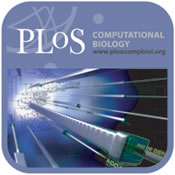| PLoS Computational Biology Overview
 PLoS Computational Biology averages 80 monthly submissions and 20 published papers each month across a wide variety of biological disciplines. The journal is pleased to announce to the ISCB membership the launch of a new Software Research section this summer. Research articles describing outstanding open source software of proven importance will be invited by the Software Editor and peer-reviewed by experts in the field. Bob Murphy (Carnegie Mellon) is our first Software Section Editor, and we are delighted to welcome him to the board. Our first article will be from Sean Eddy, describing the latest updates to HMMER. By highlighting outstanding open source andavailable software, we hope to encourage all programmers to consider deposition in an open source repository when creating new tools. PLoS Computational Biology averages 80 monthly submissions and 20 published papers each month across a wide variety of biological disciplines. The journal is pleased to announce to the ISCB membership the launch of a new Software Research section this summer. Research articles describing outstanding open source software of proven importance will be invited by the Software Editor and peer-reviewed by experts in the field. Bob Murphy (Carnegie Mellon) is our first Software Section Editor, and we are delighted to welcome him to the board. Our first article will be from Sean Eddy, describing the latest updates to HMMER. By highlighting outstanding open source andavailable software, we hope to encourage all programmers to consider deposition in an open source repository when creating new tools.
This past year the journal has published some outstanding work in fields ranging from neurobiology, to protein-protein interaction networks, to disease modelling in large populations. Some highlights based, in part, on the number of downloads, are:
In a diverse discipline with scientists of many backgrounds, education is an important feature. Some important contributions this year to our Education section included coverage of specific projects (Analyzing ChIP-chip Data Using Bioconductor. Toedling J, Huber W, www.ploscompbiol.org/doi/pcbi.1000227), to guides for making a choice about the best tool to use (The Rough Guide to In Silico Function Prediction, or How To Use Sequence and Structure Information To Predict Protein Function. Punta M, Ofran Y, www.ploscompbiol.org/doi/pcbi.1000160).
And finally, our Ten Simple Rules perspectives on professional development were translated by a reader into Chinese, greatly enhancing the distribution and value of this series. The translation is available here: http://collections.plos.org/ploscompbiol/tensimplerules.php
Beyond free content, and the ability to translate content without fear of copyright infringement, open access provides new opportunities for scholarly communications that are only just beginning to be realized. The following publications this year highlight these possibilities:
This promise will be discussed during PLoS’s “Future of Scientific Publishing” session at ISMB/ECCB 09 as part of the BioLINK SIG. We invite you to come and contribute to a future marked by the improved comprehension and dissemination of your science.

|


